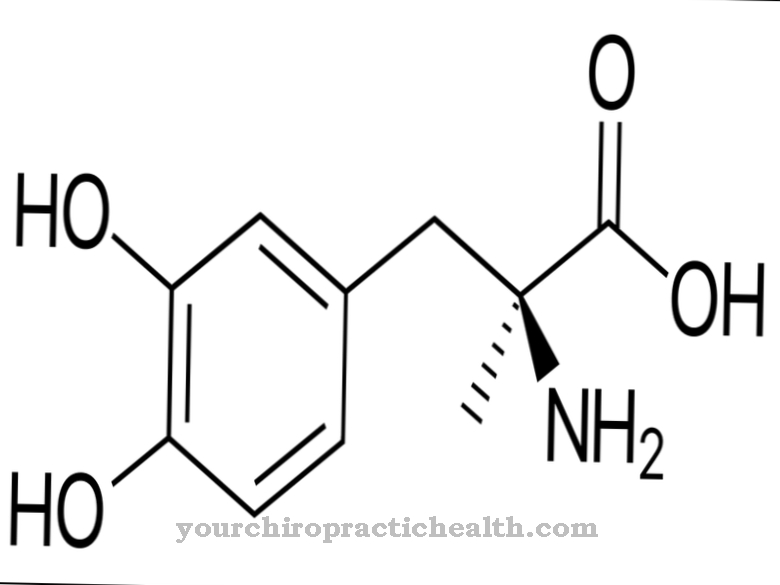Glycine is the simplest alpha-amino acid and therefore a component of all proteins. Glycine is particularly found in high concentrations in connective tissue. In the body, it serves as the central switching point between protein, carbohydrate and fat metabolism.
What is glycine?

Glycine is a non-essential, proteinogenic amino acid without side chains or functional groups and occurs universally in all proteins.
In addition to the two carbon atoms, the molecule contains an amino group in the alpha position to the carboxy group. The molecule thus fulfills the basic requirements for an amino acid. Glycine plays a central role in the biological metabolism, since it occurs again and again as an intermediate product in the chemical conversions. It is also hygroscopic (attracts water), because due to its dipole character it can bind the water molecules to itself via hydrogen bridges. Furthermore, the glycine molecule is very small and therefore does not take up much space.
That is why it is built into proteins in high concentrations, which must be very stable but also take up little space. In these proteins, the peptide chains must be very long and at the same time strongly folded. The structural proteins of the connective tissue, the collagens, meet precisely these requirements.
Pharmacological effect
Glycine has to fulfill various functions in the body. First, it is incorporated into all proteins as an alpha amino acid. Mainly in the protein of the connective tissue it is contained up to 30 percent. Glycine thus represents the most important basic building block for the structure of bones, tendons, teeth and skin.
Glycine is a non-essential amino acid. The human body can make it itself from other compounds. If it should not be adequately supplied with food due to malnutrition, the connective tissue serves as a source of glycine. Glycine is the starting compound for the biosynthesis of purines, the basic building blocks of genetic material.
It is also used to synthesize heme, the iron-containing protein in red blood cells. Creatine, which is responsible for building muscle, can also be formed from glycine. Glycine is also an essential component of the important radical scavenger glutathione. Glycine fulfills other functions in lipid metabolism, as it is involved in the formation of bile acids.
The bile acids control fat digestion. In the central nervous system, glycine functions as an inhibitory neurotransmitter. It causes muscle activity to be inhibited.
Medical application & use
Glycine unfolds a variety of positive effects on the body. It is used as an important ingredient in certain medicines and as a dietary supplement.
Glycine is known as the flavor enhancer E 640 in sweetener tablets because it has a sweet taste. It is also found as an additive in certain diet products to enhance flavor. As an ingredient in medicines, it helps the body to detoxify. It also strengthens the immune system and works against inflammation. These effects are mediated by glycine through the formation of glutathione, as glutathione can scavenge free radicals.
Glycine also inhibits bowel activity and can be used for serious illnesses and operations in the stomach and intestines. In these cases, it is often introduced intravenously in the form of artificial nutrition, thus protecting the digestive organs. Glycine is also often used in drugs together with arginine as a therapeutic agent for atherosclerosis, osteoporosis and arthrosis.
Glycine also promotes the release of glycogen from the liver. It has a regulating effect on blood sugar levels in the case of hypoglycaemia. Glycine has been found to be effective against sleep disorders and panic attacks.
Risks & side effects
Side effects of Glycine has not yet been found. It cannot be overdosed, as the glycine supplied to the body is quickly converted in the metabolism.
Due to this fact, there are no limit values. However, a lack of glycine can have dramatic effects in the worst case scenario. So z. B. in the case of poisoning with strychnine or in the case of special infections such as tetanus, glycine is bound, so that it can no longer perform its function as an inhibitory neurotransmitter.
Severe muscle spasms develop, which can be fatal due to the impairment of the respiratory system. If a reduced intake of glycine in the diet leads to a glycine deficiency, connective tissue is broken down to a greater extent, which often leads to states of exhaustion.



























